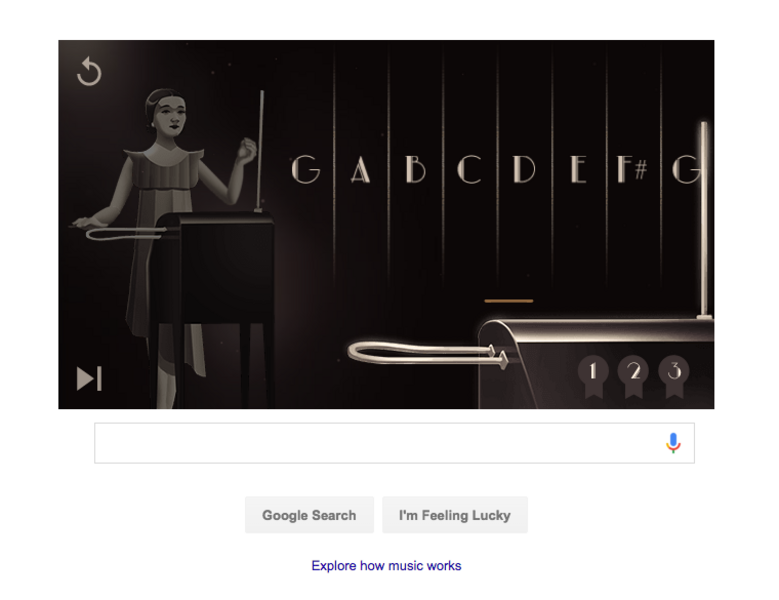Clara Rockmore and the eerie roots of modern electronic music
Loading...
Classically-trained Google users may recognize a favorite piece, Camille Saint-Saëns's "The Swan," in the website's Doodle Wednesday, but be puzzled why it sounds so particularly eerie – or why the musician seems posed with an electric mailbox.
But astute electronic music fans may recognize Clara Rockmore, the ethereally appealing violinist who abandoned her beloved instrument for the theremin, an early predecessor of today's synthesizers, bringing concert hall-prestige to a mysterious Russian physicist's invention and helping to usher in today's electronic music scene.
Listeners today recognize the theremin for its "wooooo-eeeee" sound often heard in sci-fi films, from "The Day the Earth Stood Still" to "The Thing." But during the height of Ms. Rockmore's performing career, in the 1930s and 40s, the puzzle of how the young woman pulled precise music out of a box with tubes and antennae, without even touching it, was pure magic.
After a 1928 demonstration by the device's creator, Léon Theremin, Time magazine's critic marveled,
He placed his right hand near the upright rod; a musical note streamed from the box. He wiggled his right fingers; chords and phrases danced from the box. He moved his left hand towards the horizontal ring; the music roared deeply. He removed his left hand; the music whispered forth.
Though Rockmore's renown for a classical theremin repertoire shifted attention to its musical potential, the theremin began life as a radio curiosity.
Dr. Theremin, then a scientist at the Physical-Technical Institute, managed to cancel out enough radio waves so that only the audible ones remained. Performers moved one hand through a vertical pole's electromagnetic field, using their own electric capacitance to direct the sound's pitch, while the other circled another field around a looped horizontal rod to direct volume.
But the jump from science experiment to musical fine-tuning put unique demands on performers.
"How to train the human hand to such precision that it could pick correct notes unerringly from midair, where inaccuracy of a finger’s breadth, or even taking a deep breath at the wrong instant, would register a tonal error?" Time wondered in 1928. But Rockmore, a perfect-pitch violin prodigy forced to abandon her first instrument by arthritis, was up to the task.
"When the theremin came along, it was almost like marrying somebody on the rebound," she once said. The odd new instrument won her fame throughout the United States, where she moved in the 1920s and became fast friends with Theremin, helping him fine-tune earlier models to improve its range and precision.
"I had to make – and then meet – my own standards; I had to win the public over into thinking of the theremin as a real, artistic medium," she said.
Rockmore, who was born on March 9, 1911, would have celebrated her 105th birthday today; she died in 1998 after decades of performing, and the release of a single but influential album in 1977: The Art of the Theremin.
Theremin himself, however, followed a more cryptic path after finding success for his creation in the United States. He returned to Russia in 1938, with theories ranging from war fears, tax concerns, to KGB kidnapping, and wound up at a Soviet labor camp in Siberia, where he helped create an eavesdropping device that put him back in officials' good graces. After his release, he returned to his science career, and died in Moscow in 1993.
"Before you do anything, you have to have music in your soul," Rockmore advised musicians. For theremists in particular, she warned "You also have to have courage. Playing the theremin is like being a trapeze artist without a net. You don't know if you'll land correctly or not, but you take a risk and you jump."








